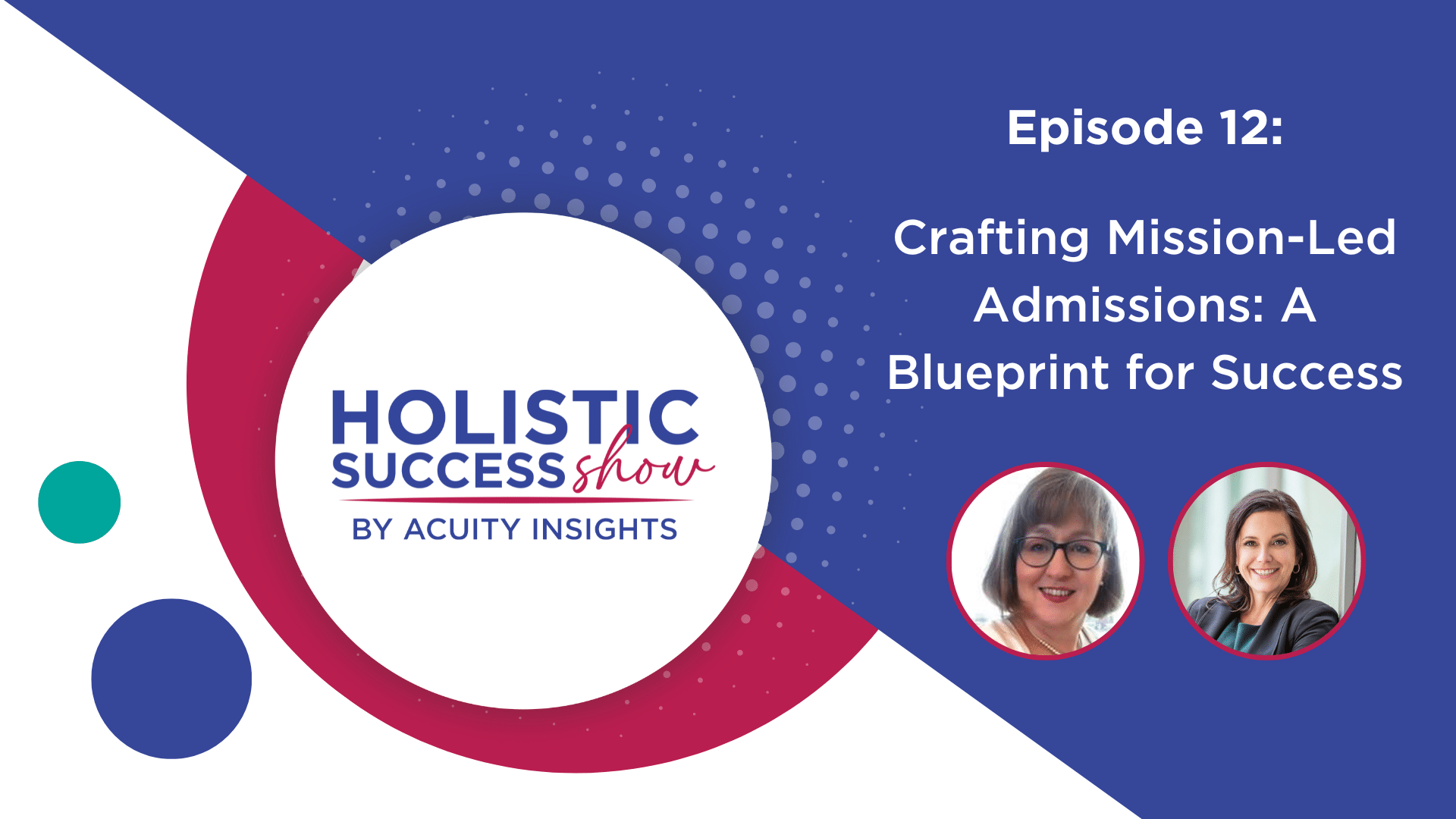University of Wollongong School of Medicine: Crafting a Mission-Aligned Admissions Process

December 14, 2023
When it comes to higher education, there’s real magic in making sure an institution’s admission process syncs with its bigger mission. It’s what helps colleges and universities truly stand out, drawing in students who resonate with their values and goals. But how do you actually align your admissions process to your institutional mission?
This week on the Holistic Success Show we welcomed Dr. Lyndal Parker-Newlyn, Associate Professor, Medical Education at University of Wollongong School of Medicine, to talk about the process of discovering and admitting students who align with the unique program and mission of the institution.
What are the benefits of aligning mission with admissions?
Aligning an institution’s mission with its admissions process offers a multitude of benefits.
- Shared purpose: By aligning mission with admissions you foster a sense of purpose and engagement among faculty, students, and the wider community. When everyone understands and resonates with the institution’s mission, it creates a cohesive and vibrant academic environment.
- Attracts the right students: This alignment allows the institution to attract students who not only possess the academic qualifications, but also students who align with its core values and goals. This alignment increases the likelihood of student success and enhances the institution’s reputation for producing graduates who contribute meaningfully to society.
- Reinforces the institution’s unique identity: When your admissions process lines up with your mission it establishes and reinforces the institution’s unique identity and strengths, right from the start of a learner’s academic journey. Setting your institution apart in the competitive landscape of higher education results in a win-win situation, where both the institution and its students thrive in a harmonious academic ecosystem.
How do you help applicants find the right program?
In competitive disciplines like medicine, physiotherapy, pharmacy, and vet science, where high-performing applicants are common, academic success is expected.
The key lies in finding a school where applicants will thrive, this is where the importance of “mission fit” comes in. Just as with a holistic approach to admissions, making the mission fit clear in the selection process helps attract the right applicants and ensures the school selects those who align with its unique values and objectives. Important to note, this approach is beneficial whether the school faces an abundance or a scarcity of applicants.
How do you build mission-led admissions?
The first step in aligning your admissions process with your mission is to carefully examine the institution’s mission statement, considering both the programnand the broader institution missions. These can vary in quality and clarity, with some being well-written and others not. When evaluating the mission, it’s also a good idea to identify whether the written statement has been recently updated or has remained unchanged for some time.
If the mission contains explicit concepts or directions, embrace them. However, if the mission is relatively generic, engage in discussions with school leaders to identify and articulate the institution’s strengths and points of differentiation. These discussions aim to clarify why the school is distinct or superior to other institutions. It is important to have a clear direction. If the mission lacks specificity, engaging with school leaders can help define and communicate the school’s unique strengths.
How do you build stakeholder engagement in your mission?
Each institution engages with stakeholders differently. Here are a few recommended steps.
- Evaluate similar institutions: Review how similar institutions communicate their written mission statement and study how effective they are at conveying their brand, which is another expression of mission. Where do they succeed and fail?
- Approach stakeholders: This will look different depending on your institution. If your mission is to serve your community, then you need to reach out to your community and local stakeholders and align your mission with their reality. Placing your mission first allows stakeholders and everyone else involved to have a shared point of contact. Proactive engagement with stakeholders, even in longstanding institutions, is key to future success.
What are some roadblocks to stakeholder engagement?
- Time and cost: The initial obstacle to stakeholder engagement with a mission often stems internally, with concerns about the perceived time and resource costs to any program or institution changes.
While the process is indeed time-consuming, it doesn’t necessarily demand a significant financial investment. It’s important to set realistic goals and secure support from individuals within the institution. When cost considerations arise, the challenge lies in understanding and allocating resources effectively.
- Managing diverse opinions: Stakeholders don’t exist in a vacuum, and there will be differing opinions when it comes to any institutional change. This is certainly a challenge, especially when the opinions diverge from the prevailing institutional perspective. Expect conflicting viewpoints and develop resilience to negative feedback, recognizing potential value in alternative perspectives, particularly from community members.
- Providing appropriate education and support: It’s critical that you plan for and provide effective education and support to community members involved in the admissions process. These individuals should possess a clear understanding of the institution’s goals and processes, ensuring active and informed participation.
- Maintaining engagement with graduates: As graduates evolve into passionate advocates for the institution’s mission, the admissions process becomes progressively smoother over time.
Take that first step, the rest will follow
Aligning your institution with its mission is a long process that may take many detours along the way.
Take that first step, and remember to start small. Engage your community. It could be as simple as putting a video on your website of someone in the community living your stated mission. Next year, see if you can bring more community members along.
“The reality is, this is a really useful process, but it’s big. If you’re going to do it, you need to be patient, because there needs to be a mind shift, both within and external to your school. One bite at a time would be my suggestion,” says Dr. Lyndal Parker-Newlyn.
Looking for more information?
- Watch our webinar with Dr. Parker-Newlyn on structuring your admissions process to achieve your higher education mission.
- Watch our webinar with Dr. Parker-Newlyn on designing an admissions process that’s authentic to your mission.
- Watch the full Holistic Success episode on aligning your admissions process with your mission
Related Articles

How interviews could be misleading your admissions...
Most schools consider the interview an important portion of their admissions process, hence a considerable…
Reference letters in academic admissions: useful o...
Because of the lack of innovation, there are often few opportunities to examine current legacy…
